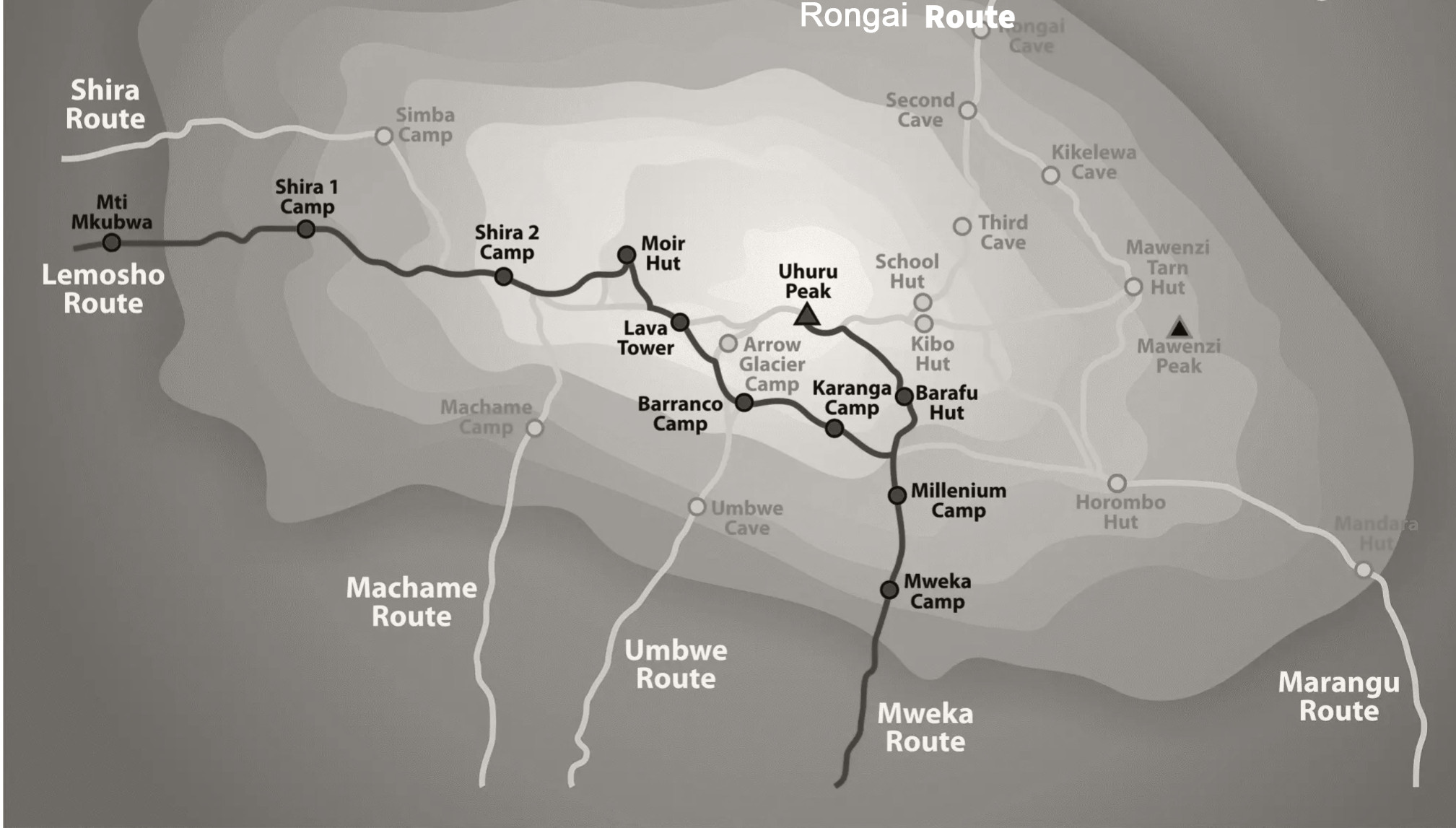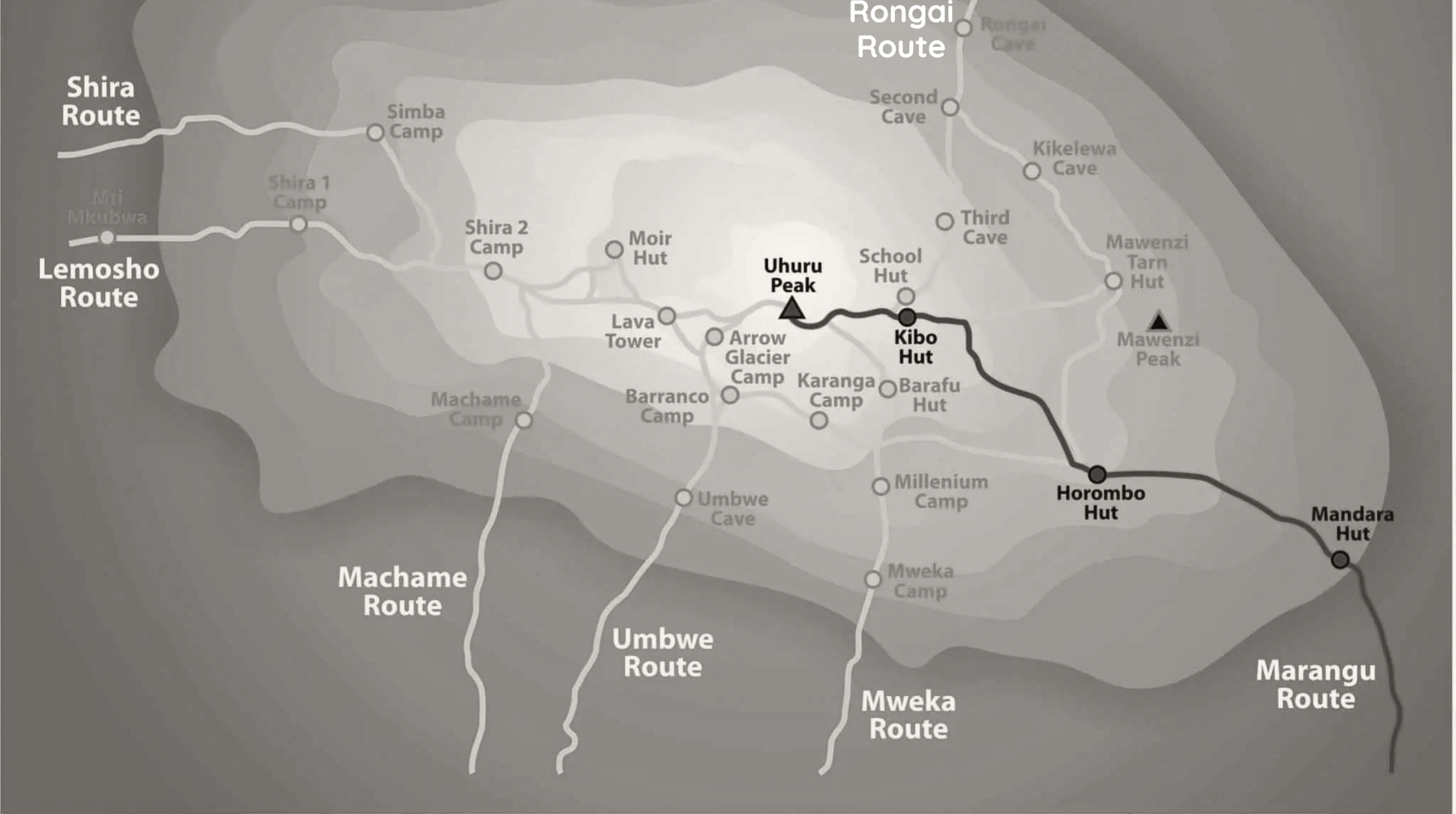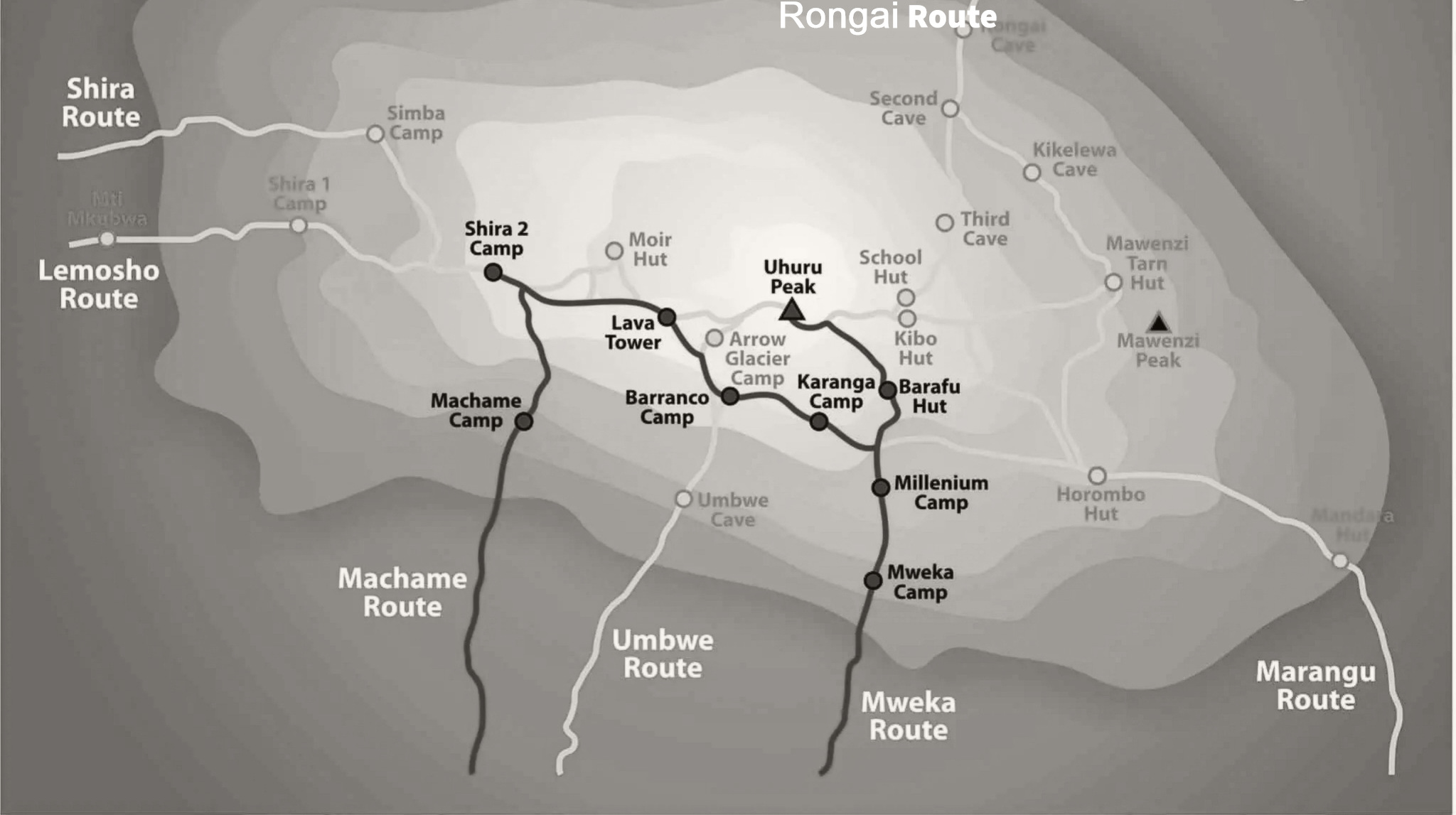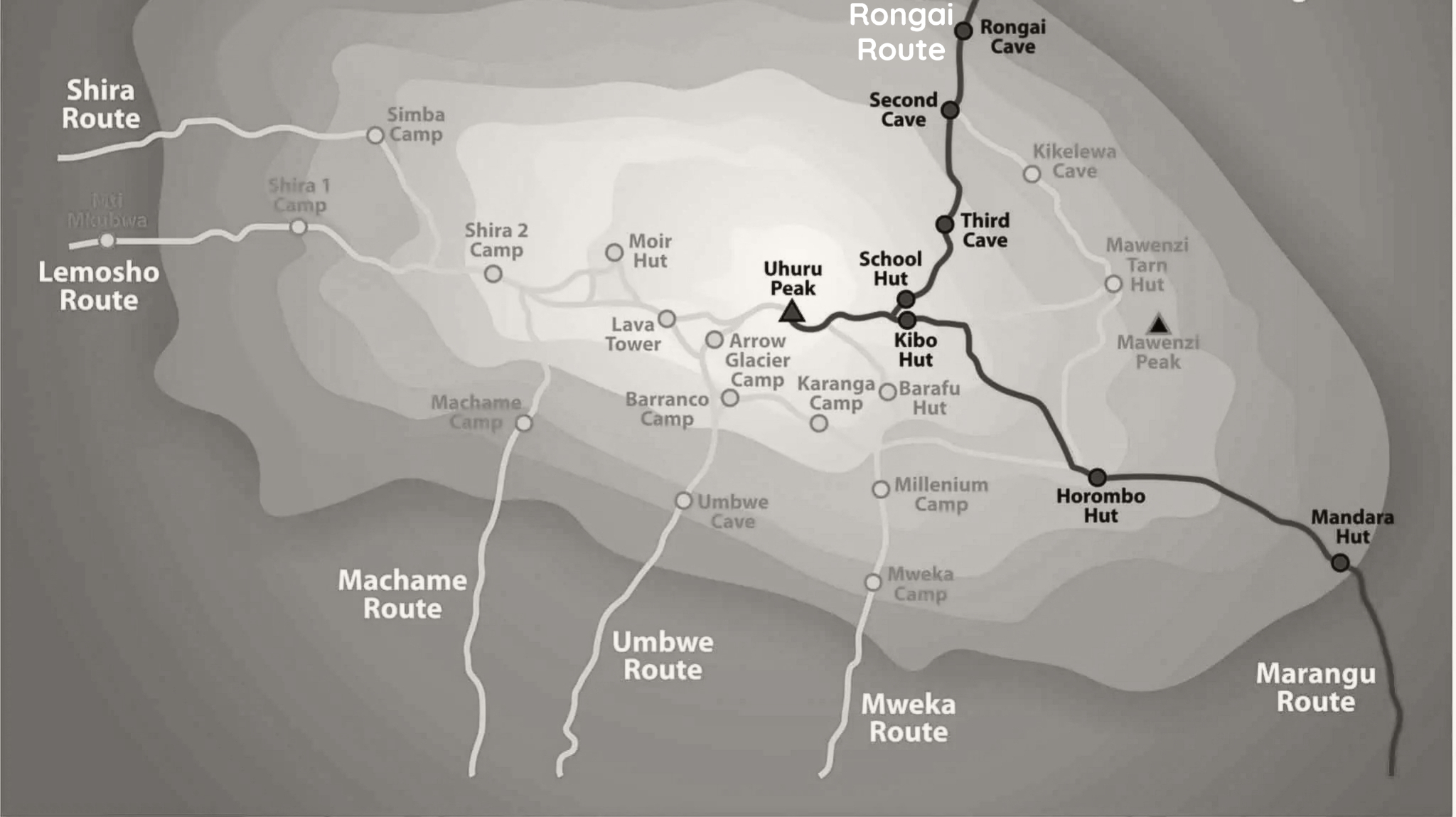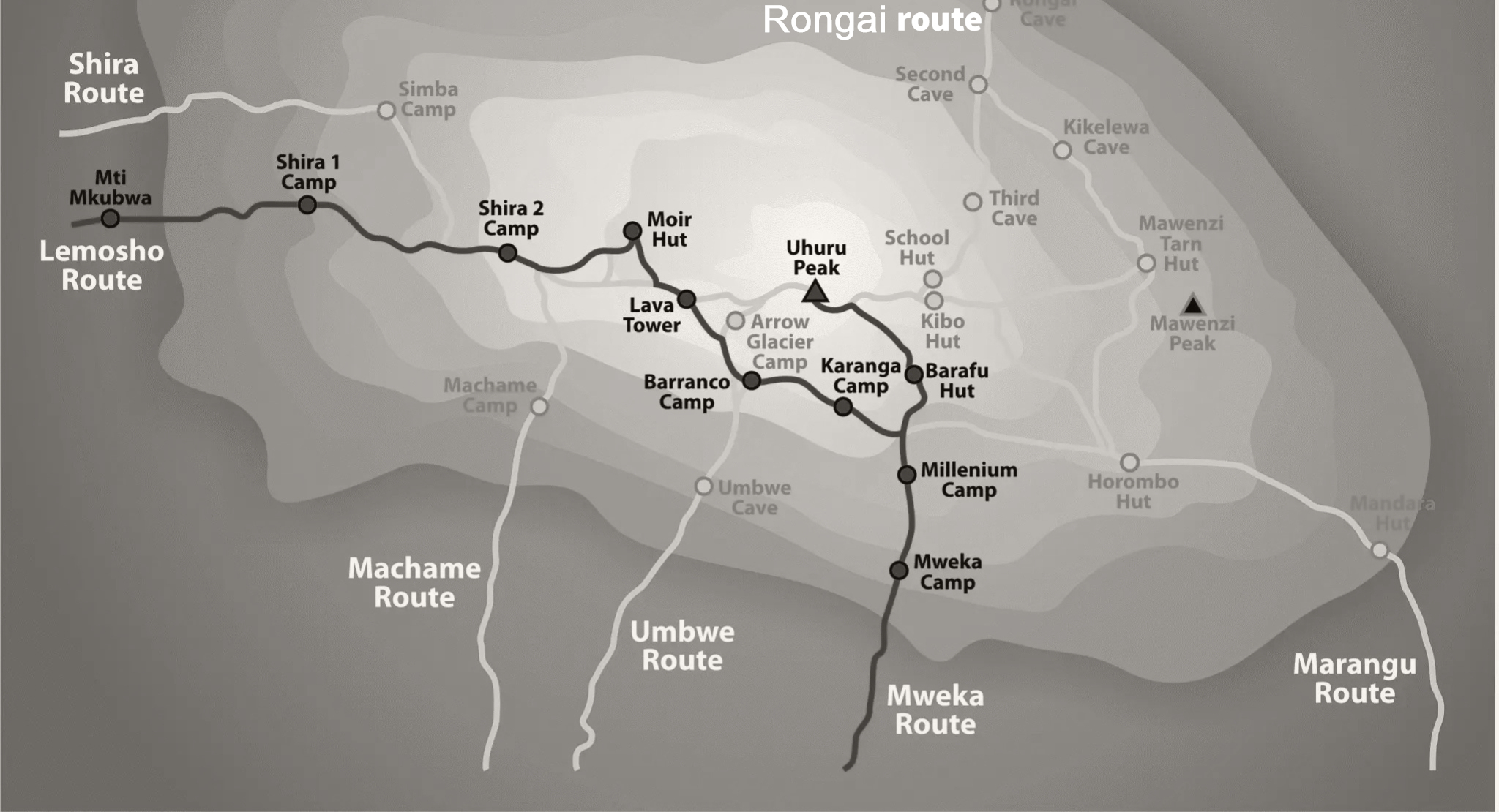Start planning your Kilimanjaro/Mt Meru/Udzungwa hike,
We guide adventure-seekers plan their dream mountains trek.
Book with Ace Tanzania Tours now.
Mountain Kilimanjaro
World’s tallest free-standing Mountain
We will precisely guide you to reach a snow-capped peak of Mt Kilimanjaro. Its slopes present an ever-present challenge to adventurous mountain climbers, creating unforgettable climbing experience.
Mountain Meru
Voted as the best destination for wildlife viewing
High concentration of wildlife in Tanzania national parks provides a spectacular safari experience virtually year-round. The vegetation is not too thick to spot animals due to : open plains, wide grasslands.
Know MoreMountain Udzungwa
view wildlife from the water.
Tanzania has spectacular Game Reserve which provide an opportunity to view wildlife from the water, after the dust & bumpy roads of a game drive, drifting along the river watching the wildlife is awesome and relaxing.
Know MoreLEMOSHO ROUTE
✓ Remote and spectacular approach with dramatic gorges and views of west Kilimanjaro.
✓ An excellent route to climb Kilimanjaro by with a high success rate.
✓ Allows climbers to “walk high, sleep low” enabling better acclimatization.
✓ The Lemosho route is one of the newer routes on Mount Kilimanjaro
✓ Lemosho is considered the most beautiful route on Kilimanjaro offers a balance of low traffic, scenic views
This route begins in the west and rather than simply intersecting Shira Plateau, Lemosho crosses it from Shira Ridge to Shira Camp. And is perhaps the least used initial ascent route on Kilimanjaro, partly because of its remote location and likewise the difficult roads. Climbers encounter low traffic until the route joins the Machame route. The road can be impenetrable during wet periods, buffalo and elephant sightings are possible on the first day trekking through the forest, The route is the longest distance to trek up Kilimanjaro, so fitness certainly plays a role in the enjoyment and success of this trek. The minimum number of days required for this route is six days, although eight days is ideal. There are no huts on this route, the accommodation is in mountain tents
MARANGU ROUTE
✓ Shortest route to the summit which means less time to acclimatize.
✓ Dormitory style accommodation which can be noisy.
✓ Less scenic due to ascent and descent on same route.
Marangu route is still the popular route to the summit, the oldest route and well established. Ascending through this route doesn’t require professional equipments. It is the only route which provides sleeping huts. You will be provided with mattresses and pillows however climbers carry their own sleeping bags. Communal washrooms, toilets and dining halls are available. Normally it takes a minimum of 5 days for the round trip. The trek can also be taken in 6 days/5 nights to add acclimatization with an extra day at Horombo Hut. The route has the least scenic variety of all the routes because the ascent and descent are done on the same path and it is the most crowded route for that reason. Marangu is recommended only during the rainy season, where the hut accommodations are preferred over wet ground, or for those who only have five days to climb Kilimanjaro
SHIRA ROUTE
✓ Shira route is varied and beautiful.
✓ Starting point is at high altitude.
✓ Approach the mountain Kilimanjaro from the west.
Shira route is virtually the similar to the Lemosho route. Basically Lemosho is the enhanced version of Shira route and Shira is an original route. Whereas Lemosho starts at Londorossi Gate and treks through the rain forest to Shira 1 Camp, the Shira route bypasses this walk by using a vehicle to transport climbers to Shira Gate, located near the Shira Ridge. Lemosho is recommended over Shira due to the relatively high altitude of Shira’s starting point. On the first day on the mountain, climbers begin their hike from 3,600 m and spend their first night at the same elevation at Simba Camp. Then, the route merges with Lemosho and follows the southern circuit route.
MACHAME ROUTE
✓ Fully catered camping.
✓ You always walk high, sleep low for better acclimatization.
✓ Stunning scenery ascending through five diverse climatic zones.
✓ Ascent and descent is via different routes.
Machame route is difficult but is adventurous and the most scenic route up Kilimanjaro. The accommodation on the way up and down is strictly camping (mobile tents) only. This trek is strenuous and may be better suited to more adventurous hikers. The Machame route is normally completed in a minimum of 6 days/5nights on the mountain.
Northern Circuit Route
✓ Very high success rate.
✓ Beautiful scenery.
✓ Panoramic views.
✓ Varied terrain.
✓ Quieter than other routes.
✓ It has great 'climb high, sleep low' opportunities.
The Northern Circuit route is one of the most beautiful of all seven established Kilimanjaro routes. This route is less crowded
than other Kilimanjaro routes and it is the longest and newest route. Great acclimatization profile,
high summit success rate, stunning views, and comparatively relaxed pace... Simply put, it's one of the best ways to
experience the roof of Africa. Additionally you end the trek at a different gate from the starting one,
so there's also no backtracking on the Northern Circuit – you're always trekking fresh trail.
The trek follows the Lemosho trail in the beginning, approaching Kilimanjaro from the west.
However, instead of following the southern traverse like all the other west approaching routes,
the Northern Circuit traverses the mountain around the quiet, rarely visited northern slopes.
If time to spare isn’t a huge constraint for you, we recommend that the Northern Circuit as the best route for experiencing
Mount Kilimanjaro. For starters, it offers stunning scenery including the quiet, rarely visited northern slope.
The Northern Circuit is the only route to show you this side of the mountain!
The Northern Circuit is a good nine day hike for those who have not trekked much at high altitudes,
with an effective extra day’s acclimatization, giving a better success rate. Experienced trekkers may opt for
the more difficult 8 day ascent along the Northern Circuit.
RONGAI ROUTE
✓ Only route that approaches from the North.
✓ Usually offers the clearest views of the mountain.
✓ Panoramic views.
✓ High chance of seeing wildlife.
The minimum number of days required for this route is six days, and seven days are highly recommended simply because the
topography of this trail doesn't afford many opportunities to 'climb high, sleep low'.
Although the scenery is not as varied as the western routes, Rongai makes up for this by passing through true wilderness areas for
days before joining the Marangu route at Kibo camp. Rongai is a moderately difficult route
The Rongai route is the only route that approaches the summit from the northern side of the mountain, near the Kenyan border.
It's one of the least crowded of the seven Kilimanjaro routes.
It's a decent route choice for those looking to climb during the rainy season,
as the north side of the mountain generally receives a little less precipitation.
Furthermore it is the preferred route for those looking for an alternative to the crowded Marangu route,
for those who would like a more remote hike and for those with less backpacking experience.
We recommend choosing this route if you have less or no trekking experience and want a more relaxed climb with fewer steep sections.
The seven-day itinerary includes an acclimatization day at Mawenzi Tarn Camp, which gives your body time to adjust to the higher elevation. Acclimatization is important in allowing you to reach the summit.
What makes the Rongai route 'hard' is its less-than-ideal acclimatization profile, because it doesn't often have you climb high during the day and then drop back down for the night, which is a key strategy in helping one's body acclimatize to the increased elevation.
UMBWE ROUTE
✓ Steep, short route with very low success rate.
✓ Poor acclimatization due to rapid ascent.
✓ Very remote and quiet for the first two days.
✓ Fully catered camping.
✓ A challenge for seasoned climbers.
✓ Not crowded.
✓ Panoramic views.
The Umbwe approaches the summit from the south.
The Umbwe is the shortest, steepest, hardest and direct Kilimanjaro route. It's not ideal for most trekkers, as it doesn't give your body much time
to acclimatise to the increased elevation.
In fact it is considered to be very difficult and is the most challenging way up Mount Kilimanjaro. Due to the quick ascent,
Umbwe does not provide the necessary stages for altitude acclimatization. Although the traffic on this route is very low, the chances of success are also low.
The route is offered at a minimum of six days, though seven days is recommended when attempting this route.
The Umbwe route should only be attempted by those who are very strong hikers and are confident in their ability to acclimatize. However, overall, the Umbwe route is not recommended and we discourage its usage for our clients.
